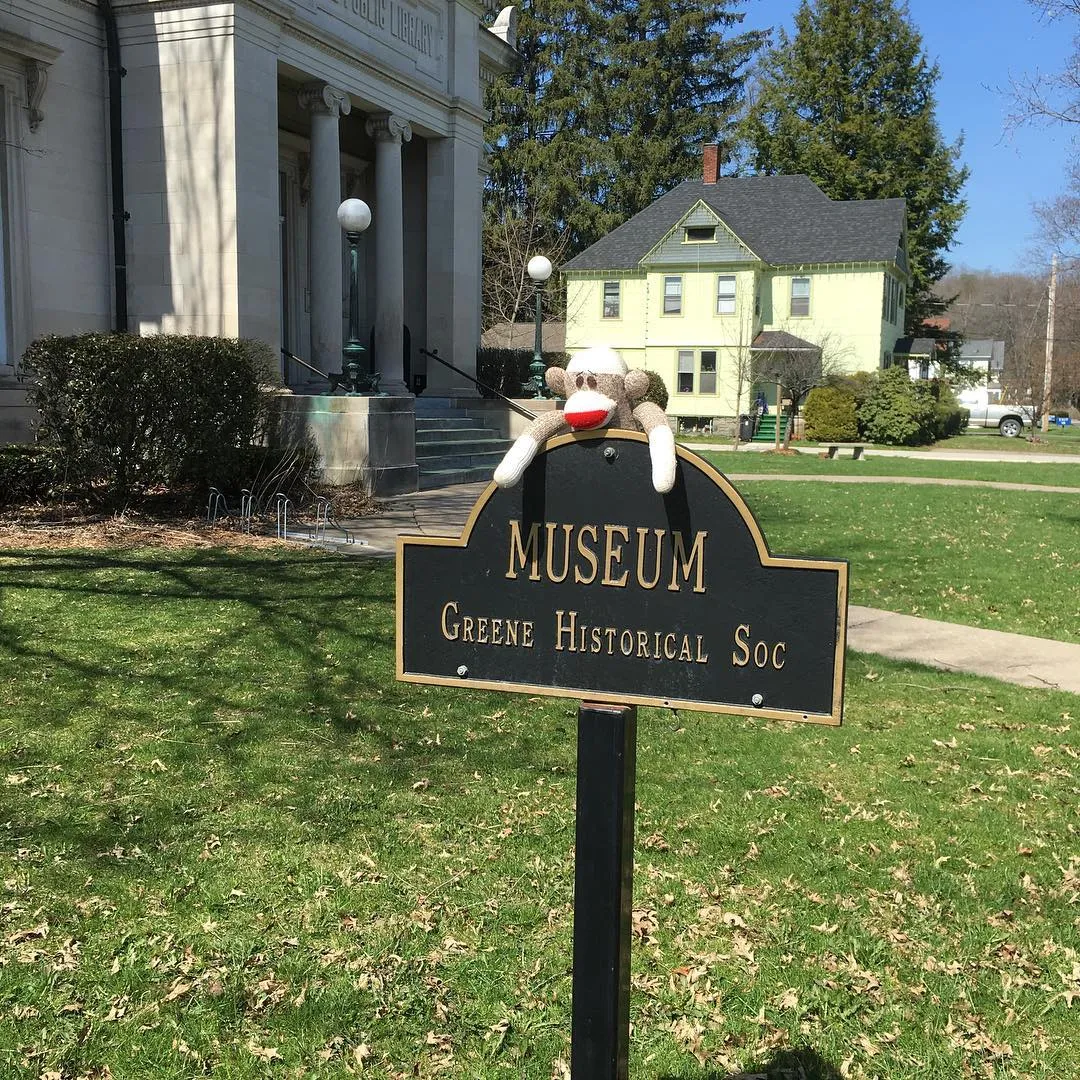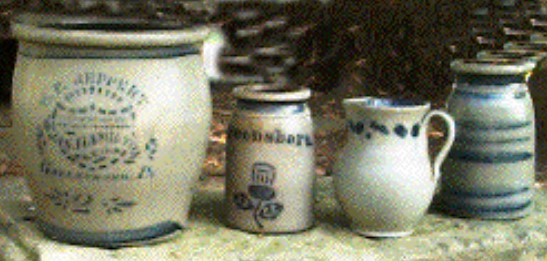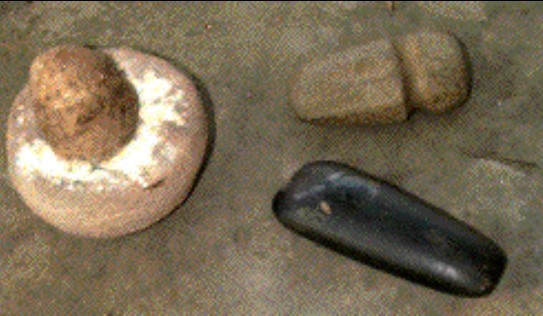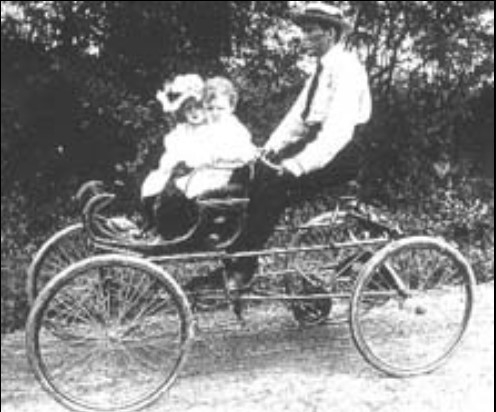
The Museum, built in the 1850s, was a typical Greene County farmhouse made of locally fired brick. In the late 1800s, several wings were added, and it became the Poor Farm to house the county's indigents. They planted crops and raised farm animals that fed them. The county leased the building to the Historical Society in 1969, and it opened as a museum in 1971.
One of the rooms is devoted to an exhibit of early watches and clocks. The early watch and clockmaker was a talented craftsman, capable of precise work. He was also the village jeweler, as seen in the many jeweler's tools in this exhibit. Most of the watch and clockmakers' tools displayed in this exhibit are from an outstanding repairman who had a shop in nearby Claysville, PA, before the turn of the century. He moved to Washington, PA, in the 1920s and sold the shop in the 1950s, working for the new owner until 1960, when he was 90! Many of these precision tools were handmade as the need for a particular tool would arise. The lathe and spindle on the nearly 100-year-old workbench were probably originally on a separate table by themselves, powered by a foot treadle. Many small parts and crystal cabinets were also a part of the Claysville shop. This exhibit was generously donated by the Reverend Robert and Mrs. Shirley Peters of Waynesburg.
There are fourteen furnished period rooms with decor ranging from Colonial to Victorian era furnishings. A full-size country store, complete with a coffee mill and "cure-all" remedies for what ails you, is a favorite of visitors. The main exhibit hall features a variety of exhibits about Greene County's history. The Doorway From Our Past exhibit shows many of the changes in our daily lives that have taken place over the past two centuries.
A fun and informative worksheet is available for an interactive exhibit view. A fun project for families. Although not currently on display due to its fragile nature, the Museum has preserved this Civil War Flag. The Local 140th Regiment reenacts Civil War battles and encampments regularly. They are a non-profit organization trying to preserve the country's heritage as living historians. They participate in many events, presentations, and functions to further the education of the local communities.Also on display are quilts, period clothing, early glassware, and an extraordinary birdhouse over six feet tall and containing 104 rooms. The large Birdhouse was built by Warren Jacobs, who took an interest in birds as a child and developed this interest into the "Jacobs Birdhouse Company." The Company was located in Waynesburg, and the birdhouses were sent all over the U.S., and several were sent abroad.
He made a variety of houses in various sizes and styles. His particular favorite bird was the Purple Martin. The Company was closed at the time of his death in 1947. This particular Birdhouse is called the "Capitol," and contains 104 rooms, weighs over 500 pounds, and is over six feet tall. The time on the clock represents the time of the end of the Spanish American War and was painted on all the "Capitol" clocks. He also built handmade wooden sleds and had an extensive bird-egg collection. On the 19 acres surrounding the Museum are several of the original outbuildings from when the Poor Farm was in operation, reconstructed log cabins, and a Narrow Gauge Steam Locomotive from the Waynesburg & Washington Railroad. The Steam Engine is pulled out of the shed for viewing during special events.
Greensboro Pottery
There were two factories in Greensboro, one for roof tiles and another for jars, jugs, pots, etc. Alexander Vance started the first factory in Greensboro as early as 1800. The tiles were first made from red clay. Later, white clay from the banks of the Mon produced the distinctive blue/gray stoneware.The glaze was achieved by throwing salt into the kiln while baking, and a vapor created by this made the glaze. The blue/gray glaze and freehand style were unique to this area, and the pottery was shipped down the Mon to Ohio and then to the Mississippi. At the industry's peak from 1860 to 1880, 200,000 gallons of pottery were made yearly. The industry thrived from the 1840s to 1915.
Monongahela Culture
There is no evidence that the Indians who lived along the Monongahela River and its tributaries were called "Monongahela." Several groups of people lived in this area from about 1100 to 1700 A.D., and they had many things in common in their way of life. For that reason, we refer to them as the "Monongahela Culture."
The way they constructed their houses, the type of pottery they made and used, and the stone materials they used for their tools, weapons, and crop cultivation were similar. Burial customs also show similarity over the years. Evidence shows the possible existence of man in North America at the end of the Glacial Age, about 15,000 years ago.Known as Paleo-Indians, they hunted now extinct animals as food until about 6,000 years ago when they discovered the mussel shoals in the rivers with their constant supply of food. This made them more settled and gave them more time to learn other skills. These "Hunters and Gatherers" soon learned to make pottery from the local clays and began planting crops near their villages.
Houses were constructed of saplings and made in a circular style with a ring of such surrounding a larger dwelling and plaza in the center of the village. A stockade surrounded many villages to protect against enemies and animals. The "Monongahela" culture spread over the southwestern part of Pennsylvania, northern West Virginia, and a little in Ohio and western Maryland.
Many Indians traded with French fur trappers and were thus considered the enemy of the British during the French and Indian War. By 1768, the tribes had signed treaties that removed them to the western side of the Ohio River. By the time the white settlers came into the area to settle, there were no longer villages occupied by these native Americans. The French trappers had been on the rivers, coming from Canada in the late 1600s, and it is thought that they carried disease, which probably wiped out many tribes.Warren Jacobs
A naturalist in the tradition of Henry David Thoreau, J. Warren Jacobs exercised many talents in his long, productive career. A superb artist, Jacobs spent hours of patient observation to produce a series of pen and ink drawings of various birds.
Many of these drawings, some completed when he was only nineteen or twenty years old, still exist. A prolific essayist, he also wrote poetry, most of which, like the haunting Sequel to the Death of a Wandering Snowy Owl, " centers around themes involving nature.
A versatile man, he used his woodworking skills to fashion cabinets, display cases, and furniture for his library and the J. Warren Jacobs Museum of Applied Oology. Housed in two rooms on the second floor of the family residence at 404 South Washington Street in Waynesburg, the Museum was advertised as "an institution for the study of behavior and relationship of birds."Although the local townspeople rarely appreciated it, it became a significant attraction in ornithological and oological circles. Housing the award-winning egg collection, the Museum was visited by countless prominent people from around the country.



